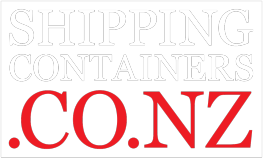Shelving offers a way to maximize storage space in your container. There are two fundamental styles of shelving: standalone and wall-mounted. Shelving is available in a variety of materials suited for virtually any storage need. Shelving is also available in a number of different types, offering something that will fit your particular needs. This articles explores different materials used for shelving, with a list of advantages and disadvantages of each. Styles of shelves are also explored, along with special considerations for capacity and storage of chemicals.
Wall mounted shelving types
This type of shelving has a variety of hardware options to suit your shelving needs. For light shelving capacity, cheap, off-the-shelf brackets will do the job. However, if you’re planning to store heavy items or chemicals on your shelving, you may need special hardware suited for your needs.
Brackets
There are a wide variety of brackets available. Available in steel, aluminum, cast iron, and plastic. Brackets should extend across most of the width of the shelving. If you are storing heavier items, you may need brackets with additional reinforcement to prevent them from collapsing. For heavy-duty applications, you will need brackets rated for the weight you expect them to hold. Industrial applications may require custom brackets with reinforcement.
Warning: Storage of materials weighing hundreds of kilograms may cause container wall to buckle.
If you need to store multiple items weighing 50kg or more, you need high-capacity standalone shelving.
Wall Mounted Shelving Material
Some shelving, such as prefabricated stainless steel, may have the brackets welded on. Most shelving, however, does not. The shelving material you choose should depend upon what you plan to store on the shelving, what total storage weight will be per shelf, and what type of materials or goods you plan to store on them. Unless you are dealing with corrosive chemicals, or some other special requirement, any readily available shelving material should be more than sufficient for your needs, provided they have the holding capacity you need.
Standalone Shelving
This type of shelving is extremely versatile. From small, decorative shelving units for curios to super heavy-duty shelves exist. There are a variety of types, too, from one-piece molded plastic shelves to slip-together shelving to locking ring shelving and large, modular shelving such as that found in warehouses. Standalone shelving is generally easy to assemble, needing only basic tools in most cases.
Heavy Storage on Standalone Shelving
If you have a container you’re going to be using for heavy storage, you may need to calculate your load per square foot or consult with a structural engineer. If you have too much weight concentrated in a single area, the plywood floor may collapse, causing damage to the container and the items stored on the shelving.
Standalone Shelving Capacity
This is one of those times when you may want to either consult a structural engineer, or save some money and buy prefabricated shelving with the capacity you need. There are several popular shelving materials for standalone shelving:
- Plastic–Popular because of price and durability, plastic shelving is readily available and inexpensive. Capacities vary, so it’s a good idea to see what both the shelf capacity and the total capacity are.
- Steel Wire–Popular with foodservice, this is perfect for storage of heavier items, with a shelf capacity of a little under 300kg, and a total shelf capacity of 1,500kg.
- Solid Steel–With capacities from as little as 90kg all the way up to about 2,500kg, be sure to double-check so you have the capacity you need.
- Aluminum Shelving–Popular in foodservice environments, aluminum shelving is strong and durable, with capacities similar to steel wire shelving.
- Wood Shelving–Ideal for residential storage, wood shelving is available in a variety of capacities, with a variety of finishes to match your container home’s decor.
- Fiberglass–This option is better suited for storage of corrosive chemicals and products. For most applications, this material is probably unnecessary. If you plan to store chemicals and/or other hazardous materials, be sure to research the laws and special requirements that are necessary first.
Some shelving literally just slips or snaps together, such as the plastic shelving. Steel wire shelving has a locking collar for each corner that you use to set a shelf at a particular height. Other shelves may require you to bolt them together.
You may find that you need both wall mounted and standalone shelving for your container. No matter what your needs, make sure that the shelving you put up not only fits your needs, but also is installed in a way that doesn’t cause any damage to your container.
For industrial grade storage, you may want to consult with a structural engineer before purchasing or custom building any shelving. That consultation could save you a lot of money down the road.
Conclusion
There is an almost limitless selection of materials and styles for shelving. Whatever you need, it’s available somewhere. Industrial storage may exceed the payload limits of your container, leading to collapse of the plywood floor, which can cause damage to the container, the product being stored, and injury to anyone nearby. Chemical storage requires special consideration due to the reactive nature of some chemicals and products. Whether you are looking for a place to set your TV and DVD collection, or you need to store 10,000kg sacks of plastic injection molding pellets, there is shelving you can use in your container.

